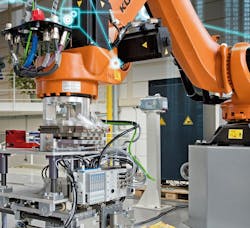An often-overlooked robot component that plays a critical role in shaping the efficiency and sustainability of these mechanical marvels is the end of arm gripper. Traditionally crafted from heavy metals, robot grippers have long been emblematic of over-engineering, consuming excessive energy and resources in their operation. However, a transformative shift is underway, propelled by the advent of lightweight additive manufacturing (AM) techniques.
To understand the impact of these new AM grippers, first consider the sheer magnitude of robotic deployment worldwide—more than 3.5 million units in operation and a staggering 500,000-plus new robots enter the market annually. Each of these machines requires grippers tailored to their unique tasks, presenting a significant opportunity for environmental impact mitigation. By embracing lightweight additive manufacturing, gripper design can be revolutionized to reduce energy consumption and carbon dioxide emissions.
In the automotive industry alone, there are estimated to be more than one million robots in factories across the globe. Many of these robots are lifting and positioning parts too unwieldy for humans to handle or repeatedly placing parts in precise locations. In many cases, the robotic grippers that move these parts weigh more than the parts they are moving. This is especially true with parts that move large but relatively lightweight objects like sheet metal panels. Many automotive companies realize these types of robot work cells are good candidates for lightweight robotic grippers.


